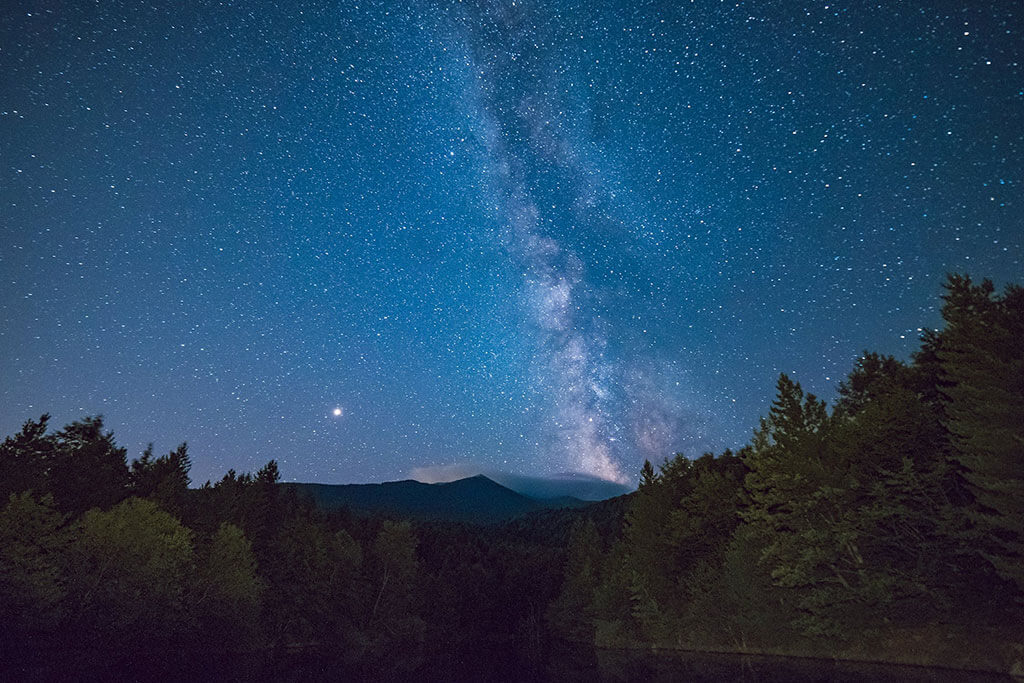
17
July
City Star Party (GO for Tuesday)
Hover above the moon like an astronaut and get eye-to-eye with the planets. Find colourful stars, star clusters, bright nebulae and even another galaxy. Our monthly City Star Party is the place to catch universe from within the city limits at Bayview Village Park. If you don't have a telescope then you will find many astronomers who would love to share a view. If you are thinking of buying a telescope, viewing with other people's equipment is the best way to make a good choice. If you have a telescope or binoculars, please bring it!

18
September
Maria A. Shchuka Library: Cosmology, Cell Phones and Video Games
Join us for a Science Literacy Week talk with Professor Keith Vanderlinde! Professor Vanderlinde has spent the last decade building and using telescopes to study the universe: its composition, history, and eventual fate.
Aided by technologies that make cell phones and video games possible, and which make video games a staple of modern culture, he and colleagues from across Canada have just completed a massive new radio telescope in Penticton, B.C., which is mapping a larger volume of space than ever attempted before.

9
July
Dark Sky Star Party (GO for Monday)
See the milky way and galaxies with the unaided eye. Point your telescope to find the many dim deep space objects that sprinkle the sky. Away from Toronto's light polution, there is so much to see. We observe from the Long Sault Conservation area, an hour outside of Toronto. We meet around dusk once a month in the parking lot for views only seen in dark sky conditions. We hold this event on the first clear night of our week-long window, so the date and time are determined closer to.

21
July
UofT Planetarium: The Life and Death of Stars (SOLD OUT)
Showtimes: 7:00pm, 8:10pm, 9:15pm
The stars in the night sky seem unchanging and eternal, and have remained the same for the history of human civilization. However, over millions and billions of years, new stars are born, live out their long lives, and eventually die in a blaze of glory. In this show, we will be exploring the lives of stars by visiting stellar nurseries, supernova remnants and much more!

13
July
UofT Planetarium: The Life and Death of Stars (SOLD OUT)
Showtimes: 7:00pm, 8:10pm, 9:15pm
The stars in the night sky seem unchanging and eternal, and have remained the same for the history of human civilization. However, over millions and billions of years, new stars are born, live out their long lives, and eventually die in a blaze of glory. In this show, we will be exploring the lives of stars by visiting stellar nurseries, supernova remnants and much more!

27
July
UofT Planetarium: Grand Tour of the Cosmos (SOLD OUT)
Showtimes: 7:00pm, 8:10pm, 9:15pm

14
July
UofT Planetarium: Grand Tour of the Cosmos (SOLD OUT)
Showtimes: 7:00pm, 8:10pm, 9:15pm

18
July
Kortright Centre: Midnight Astronomy (SOLD OUT)
Receive a detailed introduction to the basics of Astronomy through an indoor presentation. Learn your way around the night sky in an amazing portable planetarium. We'll venture out into the darkness for naked-eye viewing of constellations, more detailed observations with binoculars (provided) and viewing planets and deep-sky objects through telescopes of amateur astronomers.
Rain date July 26, 2018

23
June
Millennium Square Stargazing Night (NO GO for Saturday)
Everyone is invited to join us and Durham Skies on June 23 for stargazing at the edge of Lake Ontario. Take a free look through different kinds of telescopes (including solar-filtered scopes) to get close-up looks at sunspots, craters on the Moon, brilliant Venus, giant Jupiter and Saturn with its rings. Peer deep into space and try your hand at spotting faint star clusters and nebulae. You can even bring your own telescope along and we'll give you expert advice on how to use it better.

23
June
OSC: Shoot the Moon Star Party
To the Moon and back! Show the Earth’s only natural satellite a little love by taking its picture with your smartphone or digital camera. As the second-brightest, regularly visible celestial object in our sky, photographing the Moon is a snap. (See what we did there?)
Participate in an astrophotography workshop, take a tour of the night sky using a telescope, engage in hands-on, Moon-themed activities, find out about the latest in lunar science and learn about mathematician Katherine Johnson, whose calculations helped put the first humans on the Moon.
